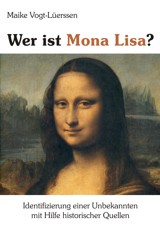I can't hardly believe that the art historians after the time of ten years are still unable to admit that they made a big mistake regarding the identity of the young woman on the picture of the left side, because they do not know the history of the past, do not know the different members of the dynasties of the Renaissance and their coats-of-arms, symbols or emblems. You would expect ten years is a lot of time to fill up this knowledge gap. But – it seems – not long enough for the art historians, who only know two rules. 1: Art historians are always correct with their opinions, suggestions and feelings towards the great works of art in the Renaissance. 2. If they are wrong, immediately rule Number 1 comes into effect: they are always correct. Thus today I read regarding the portrait of the young woman the following in the book: "Kings, Queens, and Courtiers - Art in Early Renaissance France" (New Haven and London 2011): "Although sometimes identified as Suzanne de Bourbon, the only child of Jean Hey's patrons Pierre II of Bourbon and Anne of France, the somber subject of his refined portrait must be the Habsburg princess Margaret of Austria [why must? - because one of your colleagues made this stupid suggestion? see above rule No. 2]. The alternating enamel C's and M's that edge her underdress and her large fleur-de-lis pendant support this identification. The scallop shells on her cap probably relate to the French royal order of Saint Michael." (p. 126) And now my answer to this: (yes, I still haven't given up my hope that art historians are capable of learning!): 1. The Symbol of the fleur-de-lis can not only be used by the French Kings and Queens, but also by the members of the dynasty of the Bourbons (have you ever looked at the coat-of-arms of the Bourbons? It's not so difficult to do this!) 2. The Symbol of the shell is an emblem of the Bourbons, which indeed can also be found as a Symbol in the French royal Order of Saint Michael. By the way, no woman in the past was allowed to decorate herself with this Order. Due to the Symbol of the shell we know that the depicted young woman belonged to the dynasty of the Bourbon. 3. The painter did not use the letter (or enamels) of "C" and "M" to tell us something about her, but "C" and "II", which means "Charles II", who was the cousin and husband of Suzanne of Bourbon. Her portrait was made by the court painter of her parents, Jean Hey, when she married Charles II in 1505. The art historians should really have a look at the contemporary sources of the 15th and 16th centuries to learn what the letter "M" looked like instead of repeatedly copying this nonsense. I don't think that this is an unreasonable demand, or is it? But now my dear readers have a look at the portraits of Margaret of Austria (= Margarete von Österreich). Do you see – except of the costume, which was characteristic for the times of Margaret of Austria and Suzanne of Bourbon – any similarities? The art historian Martha Wolff, who is responsible for this above commentary regarding this portrait painting, didn't see it either and therefore used the favourite "idealizing", a tool which is so common by art historians when they do not know who is depicted or when they see no similarities with their suggested person and the depicted one: "... Because other likenesses of Margaret in her childhood and later years survive for comparison, we can see how Hey idealized his sitters." (p. 126) Is this not crude to declare Jean Hey for incompetent to make a realistic portrait of her when in actual fact the art historian herself is completely incompetent? Because Jean Hey made very realistic portraits of Suzanne of Bourbon, whatever her age was (on the right side you see Suzanne when she was around two years old). See more portraits of Suzanne de Bourbon (= Suzanne von Bourbon) here.



